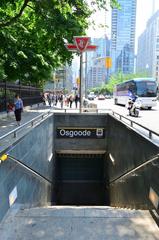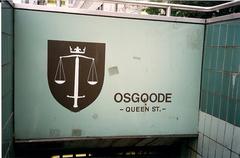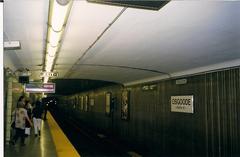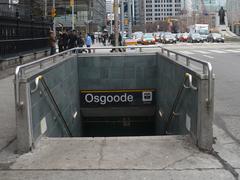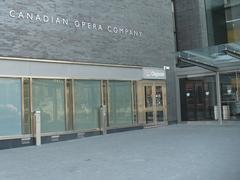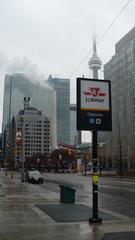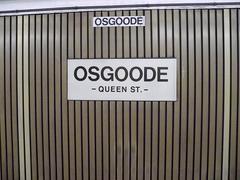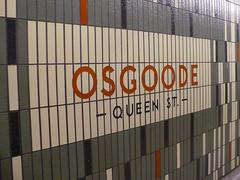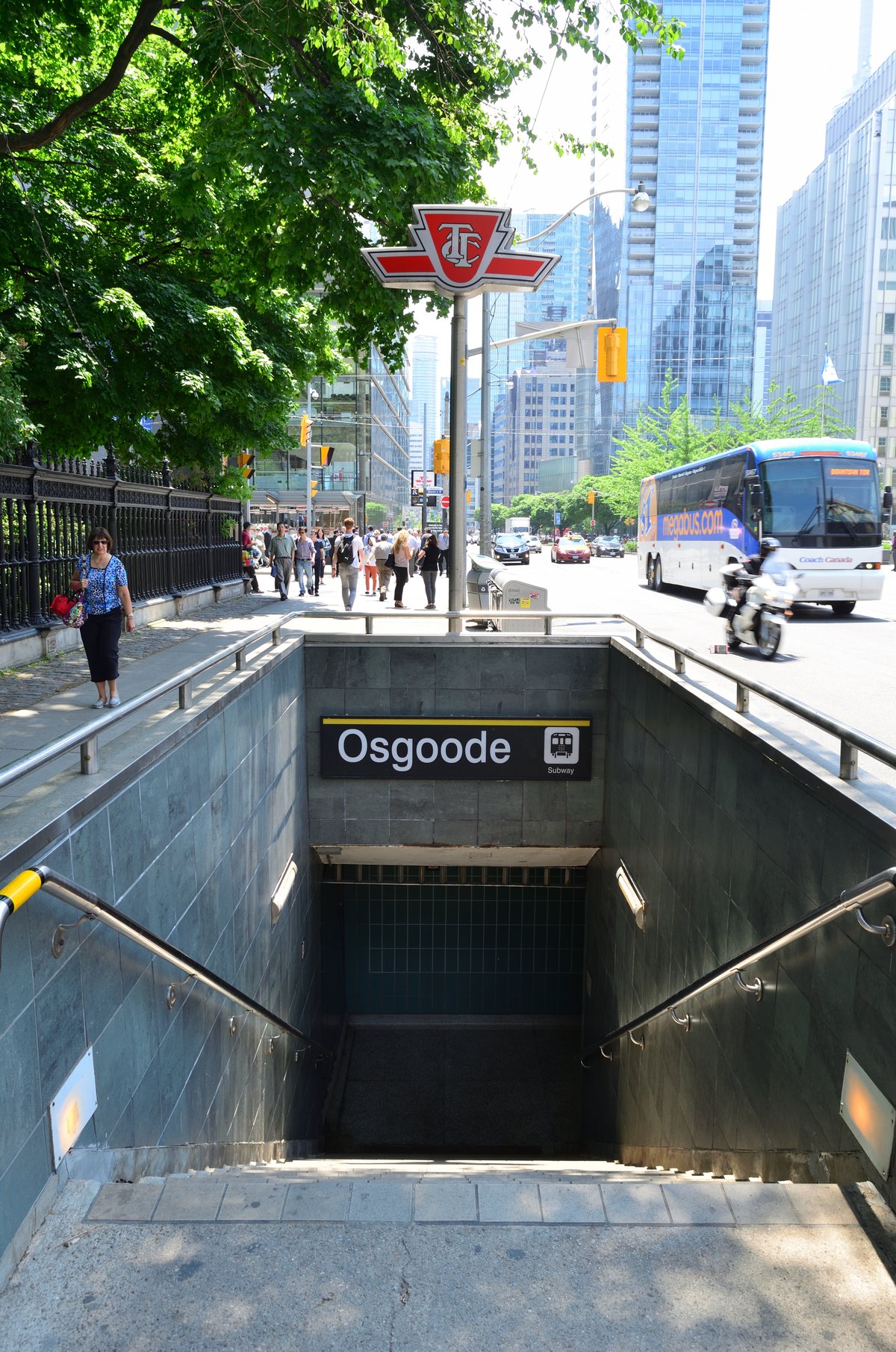
Osgoode Hall Toronto: Visiting Hours, Tours, Tickets & Historical Landmarks Guide
Date: 15/06/2025
Introduction
Osgoode Hall, located at 130 Queen Street West in downtown Toronto, is an enduring emblem of Ontario’s legal heritage and architectural splendor. Established in the late 1820s and named after William Osgoode, the first Chief Justice of Upper Canada, Osgoode Hall has been a pivotal site for legal education, judicial proceedings, and civic events for nearly two centuries (Wikipedia; Parks Canada). This guide provides detailed information for visitors, including hours, ticketing, accessibility, historical highlights, and practical travel tips, ensuring a seamless and enriching experience for all.
Table of Contents
- Introduction
- Historical Background and Naming
- Architectural Evolution and Key Features
- Legal and Civic Significance
- Visiting Osgoode Hall: Hours, Admission, Tours, and Accessibility
- Interior Highlights
- Exterior and Grounds
- Preservation and Heritage Status
- Visitor Tips & Frequently Asked Questions
- Contact and Further Information
- Summary
- References
Historical Background and Naming
Osgoode Hall’s roots date to 1828, when the Law Society of Upper Canada (now the Law Society of Ontario) acquired a six-acre site to establish a dedicated headquarters for legal regulation and education (Parks Canada). The building was named in honor of William Osgoode, whose legal reforms left a lasting imprint on Ontario’s justice system (Plan and Tour). The name “Osgoode Hall” extends beyond the building, influencing the nearby subway station and the original Osgoode Hall Law School, signifying its central role in Ontario’s legal and civic identity.
Architectural Evolution and Key Features
Origins and Early Construction (1829–1832)
Designed by John Ewart and William Warren Baldwin, the original Osgoode Hall structure was completed in 1832 in a restrained Georgian Palladian style. Its symmetrical façade and classical portico set a precedent for future expansions (The Canadian Encyclopedia).
Expansion and Victorian Enhancements (1840s–1860s)
Significant growth in the legal profession led to expansions in the 1840s and 1850s, including work by Henry Bowyer Lane and later Frederic Cumberland and William Storm. These architects incorporated Victorian and Neoclassical elements, such as a grand domed roof, intricate stonework, and the imposing central hall (Law Society of Ontario).
The Iconic Iron Fence and Grounds
Completed in 1867, the cast iron fence—famed for its “kissing gates”—encloses lush gardens and mature trees, creating a peaceful retreat amid the city bustle. The fence’s unique gates have inspired local folklore and remain a photogenic feature (Doors Open Ontario).
Modern Adaptations
Subsequent additions, most recently in 1991, have transformed Osgoode Hall into a complex, maze-like structure while preserving its historic façade and essential character. Careful stewardship by the Law Society of Ontario and the provincial government ensures that heritage and contemporary functionality coexist (Law Society of Ontario).
Legal and Civic Significance
Since the mid-19th century, Osgoode Hall has served as the seat for Ontario’s highest courts, including the Court of Appeal and the Superior Court of Justice (Ontario Courts). The site also housed the province’s only recognized law school until 1974, nurturing generations of legal professionals (Wikipedia).
The building played key roles in significant historical events, such as sheltering refugees from the Underground Railroad and sustaining damage during the Rebellion of 1837. Its grounds were among the first in Toronto designed for public exercise and relaxation, reflecting progressive values in civic planning (Parks Canada).
Visiting Osgoode Hall: Hours, Admission, Tours, and Accessibility
Visiting Hours
- Exterior Grounds: Open daily, 7:30 a.m. to 6:00 p.m., weather permitting (lso.ca).
- Building Access: Open to the public Monday to Friday, 9:00 a.m. to 5:00 p.m.; closed weekends and statutory holidays. Entry inside may be limited to tour times or special events.
Admission and Tickets
- General Admission: Free for both grounds and building public areas. No tickets required for standard entry (Doors Open Ontario).
- Guided Tours: Offered during summer (July–August, weekdays at 1:15 p.m.), as well as during Doors Open Toronto each May. No reservations needed for summer tours; group tours (10–20 people) can be booked September–June (lso.ca).
Accessibility
Osgoode Hall is wheelchair accessible via the main entrance, with elevators and accessible restrooms available. Visitors needing special accommodations should contact the Law Society in advance (lso.ca).
Photography
Casual photography is permitted in most public areas, but is restricted in courtrooms and during legal proceedings. Professional or staged photography, including wedding shoots, requires permission (Ontario Courts).
Interior Highlights
The Atrium and Central Hall
The central hall features a grand Victorian ceiling with intricate ornamentation and a geometric patterned floor, exemplifying 19th-century institutional design (The Canadian Encyclopedia).
The Great Library
Considered one of Canada’s most beautiful rooms, the Great Library boasts a triple-cube design, soaring ceilings, cork flooring, and a stately fireplace. It houses a renowned collection of legal texts and is open to the public during regular hours (Osgoode Hall; Law Society of Ontario).
Convocation Hall
Convocation Hall serves as a venue for Law Society events and the Osgoode Hall Restaurant. Its ten stained glass windows depict legal heritage and add to the hall’s grandeur (Osgoode Hall).
Exterior and Grounds
The grounds are a tranquil oasis, featuring the McMurtry Gardens of Justice, mature trees, and legal-themed sculptures. The iconic iron palisade fence and “kissing gates” are favorite photo spots. The gardens are especially inviting in summer, offering shaded benches and a peaceful retreat from the city (lso.ca).
Preservation and Heritage Status
Osgoode Hall is a designated National Historic Site, recognized for its architectural integrity and role in the evolution of Ontario’s legal system (Parks Canada). Ongoing preservation is managed by the Law Society of Ontario, with careful attention to balancing heritage and modern functionality (Law Society of Ontario).
Visitor Tips & Frequently Asked Questions
Practical Tips
- Arrive Early: Especially during summer tours, as groups fill up quickly.
- Respect Dress Code: No formal requirement, but business-casual attire is recommended when court is in session.
- Security: Allow extra time for security screening at entrance points.
- Facilities: Restrooms available; no café onsite, but nearby Queen Street offers dining options.
- Combine Visits: Osgoode Hall is steps away from Nathan Phillips Square, the Eaton Centre, and the Art Gallery of Ontario.
Frequently Asked Questions
Q: What are Osgoode Hall’s visiting hours?
A: Grounds are open daily, 7:30 a.m.–6:00 p.m.; building open Monday–Friday, 9:00 a.m.–5:00 p.m.
Q: Is there an entrance fee or are tickets required?
A: No, admission is free.
Q: Are guided tours available?
A: Yes, free tours are available in summer and during Doors Open Toronto. Group tours can be booked in advance.
Q: Is Osgoode Hall wheelchair accessible?
A: Yes, via the main entrance; contact the Law Society for specific accommodations.
Q: Can I take photographs?
A: Yes, in most public areas. Restrictions apply in courtrooms and during legal proceedings.
Q: How do I get to Osgoode Hall?
A: The building is directly accessible via Osgoode subway station (Line 1 Yonge–University).
Contact and Further Information
- Address: 130 Queen Street West, Toronto, ON M5H 2N6
- Telephone: 416-947-3300
- TTY: 416-644-4886
- Official Website: Osgoode Hall
- Law Society Visitor Info: lso.ca
Download the free Osgoode Hall app or the Audiala app for multimedia self-guided tours and the latest visitor updates (Audiala App).
Summary
Osgoode Hall stands as a beacon of Toronto’s historical, architectural, and legal landscape. Its evolution from a Georgian Palladian original to a Victorian-era landmark, combined with its enduring function as Ontario’s legal epicenter, makes it a must-visit for locals and tourists alike. Free admission, accessible facilities, and an array of guided and self-guided tours ensure that every visitor can explore its storied past and vibrant present (Parks Canada; Law Society of Ontario; Doors Open Ontario).
Whether you’re an architecture lover, a legal history enthusiast, or simply seeking a peaceful garden retreat, Osgoode Hall offers a uniquely enriching Toronto experience. For the latest information, consult the Law Society’s official channels and consider virtual or audio tours to enhance your visit.
References
- Osgoode Hall Toronto: Visiting Hours, Tickets, and Historical Insights, 2025, Law Society of Ontario
- Toronto Journey 416, 2025, Osgoode Hall History and Architecture
- Plan and Tour, 2025, Exploring the Historic Charm of Osgoode Hall in Toronto
- The Canadian Encyclopedia, 2025, Toronto Feature: Osgoode Hall
- Doors Open Ontario, 2025, Osgoode Hall
- Law Society Gazette, 2025, Take a Tour of Osgoode Hall
- Toronto for You, 2025, Explore Historic Buildings Toronto
- Wikipedia: Osgoode Hall, 2025
- Osgoode Hall Official Website, 2025
- Law Society of Ontario, 2025, Osgoode Hall and Ontario Legal Heritage
